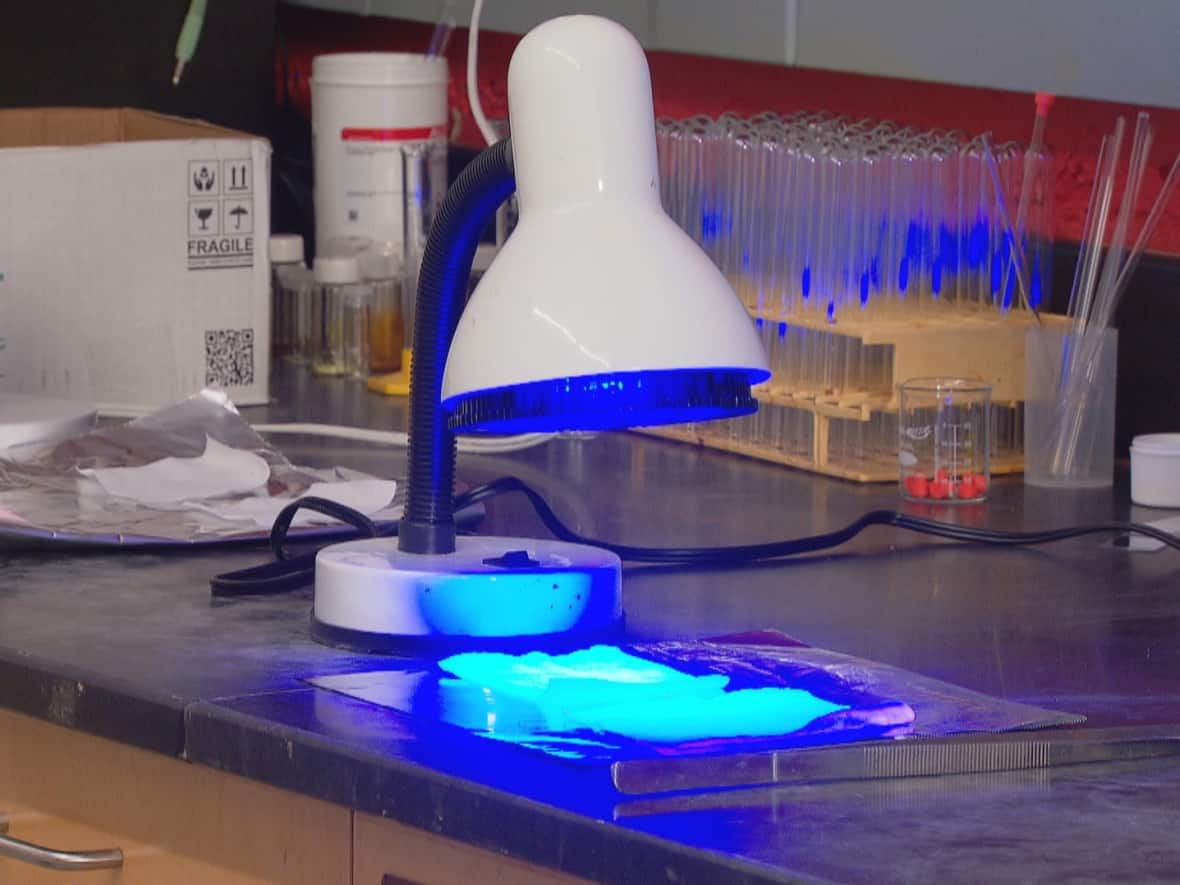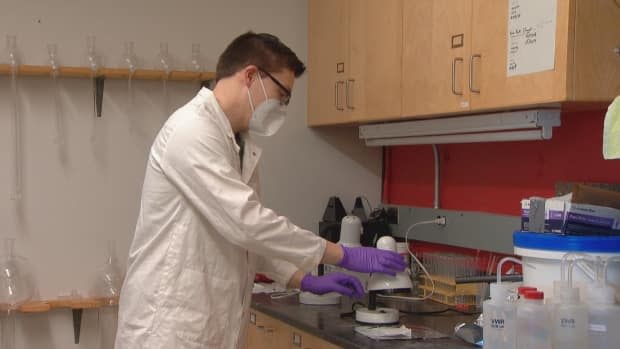UBC researchers create a fabric coating that kills COVID-19, E. coli

Researchers at the University of British Columbia have developed a coating for almost any fabric that decreases the chances of spreading bacteria and viruses.
According to a release from the university, the liquid coating decreases the infectivity of the virus that causes COVID-19 by up to 90 per cent. And in the future, people might be able to spray it on fabric themselves, said the release.
Lead author of the study and chemistry department doctoral student Taylor Wright says the solution — which they've been working on for the duration of the pandemic — can be put onto textiles to make them anti-microbial. Some of those fabrics include cotton, polyester, denim and silk.
Wright says they created the solution to act as an added layer of protection along with personal protective equipment, especially in a health-care setting like a hospital.
The study was published last month in American Chemical Society Applied Materials & Interfaces.

"We're more interested in working with textile manufacturers so that when you purchase something like a hospital gown, a face mask or even like a pillow case for a hospital bed, it's naturally coated with our material," Wright said.
He explained in an interview with CBC News that a fabric is coated with the liquid then placed under an ultraviolet light until the fabric is dry.
Both components are safe for human use, and the entire process takes about one hour at room temperature, Wright said in the press release.
He says the solution can work in two different ways. When added to fabrics, it can work with little to no light. However, when it's exposed to ultraviolet light or light coming from light bulb or the sun, it gets a boost to kill off bacteria or viruses.
According to the release, researchers bathed the treated fabric in bacterial soups of Escherichia coli (E. coli) and Methicillin-resistant Staphylococcus aureus (MRSA), both major sources of hospital-acquired infections.
They found there were still 85 per cent of viable E. coli bacteria after 30 minutes. But that fell to three per scent when the treated fabric was exposed to UV light for the same amount of time. The results were similar with the MRSA bacteria.

Wright said researchers have also found when they add their solution to fabric, it makes the fabric hydrophobic, meaning it repels water off the surface.
"If someone coughs on your dressing gown or your hospital bed, that water just falls right off," he said while adding the team is working with manufacturers to figure out how long the effect will last after multiple washes with laundry detergent.
Senior author of the study and chemistry professor Dr. Michael Wolf says the team is now working to make the solution better so it can fight off other viruses and bacteria. He says they're actively working to commercialize the product.
He adds they hope the solution will be incorporated into clothing, so it has the added advantage of protection.
"We'd like to see it be optimized for different scenarios like in hospitals and in exercise clothing. So out there in the market and keeping people safer," Dr. Wolf said.
The university has applied for a patent in the United States.


